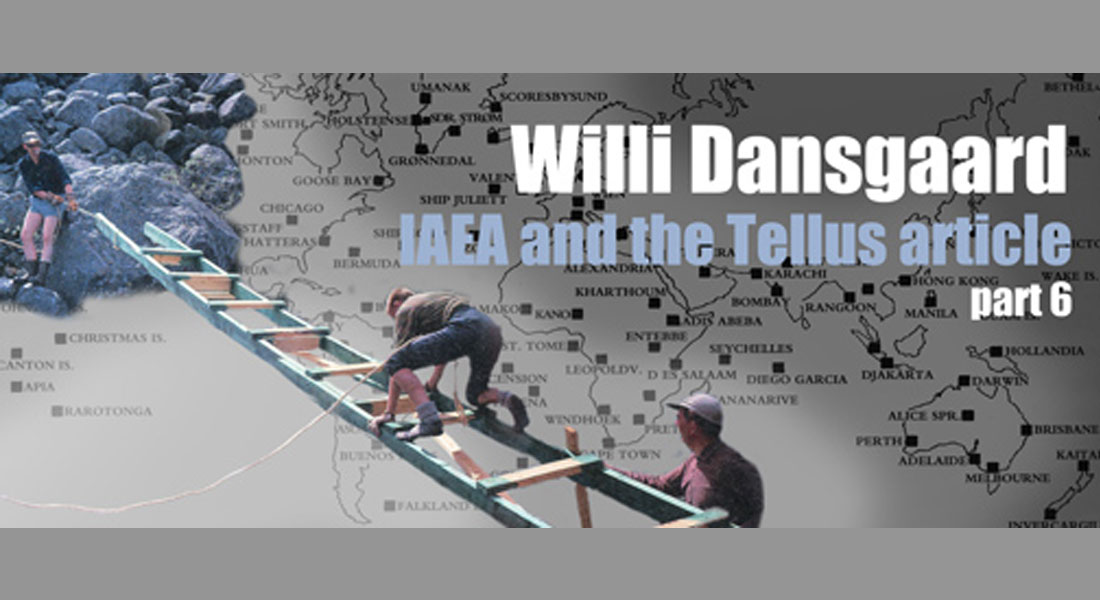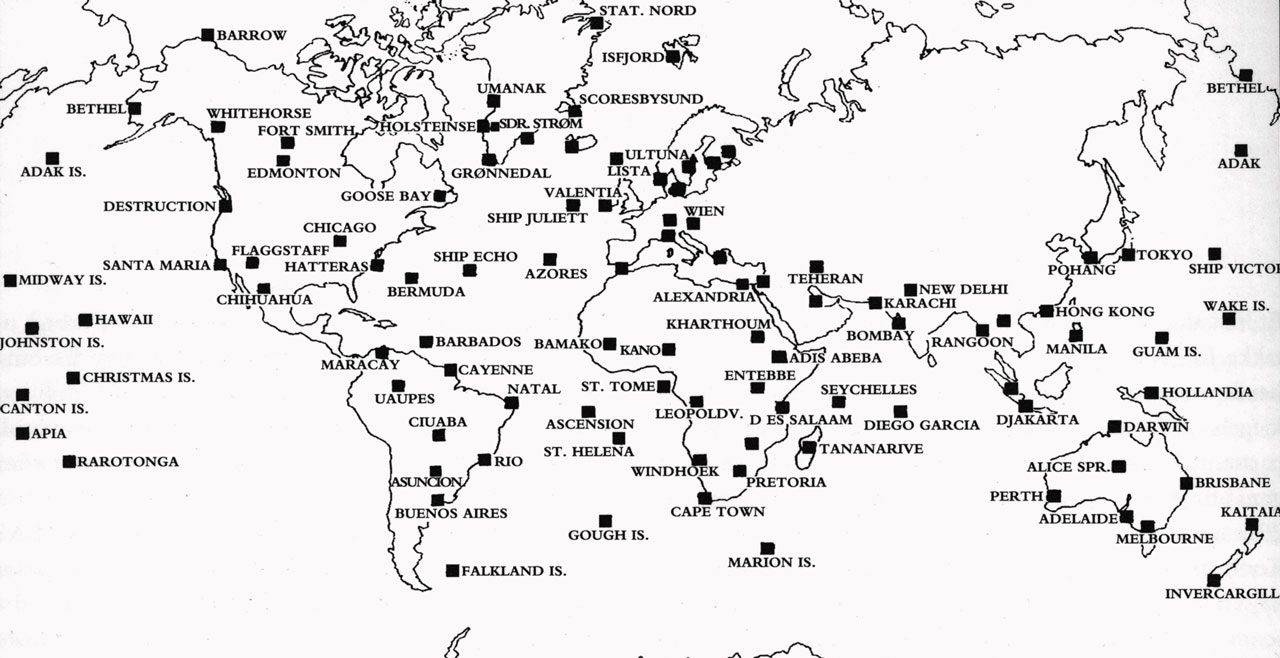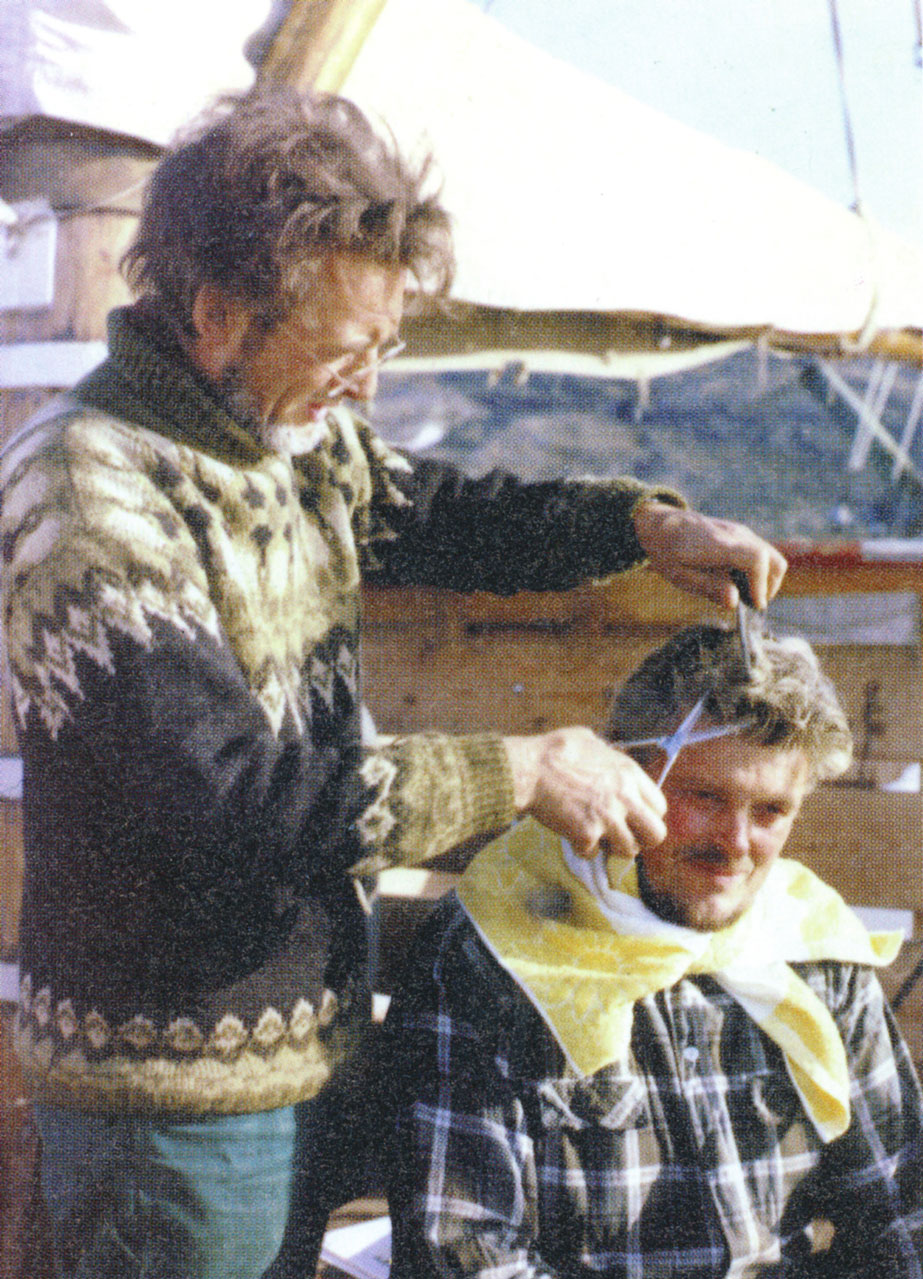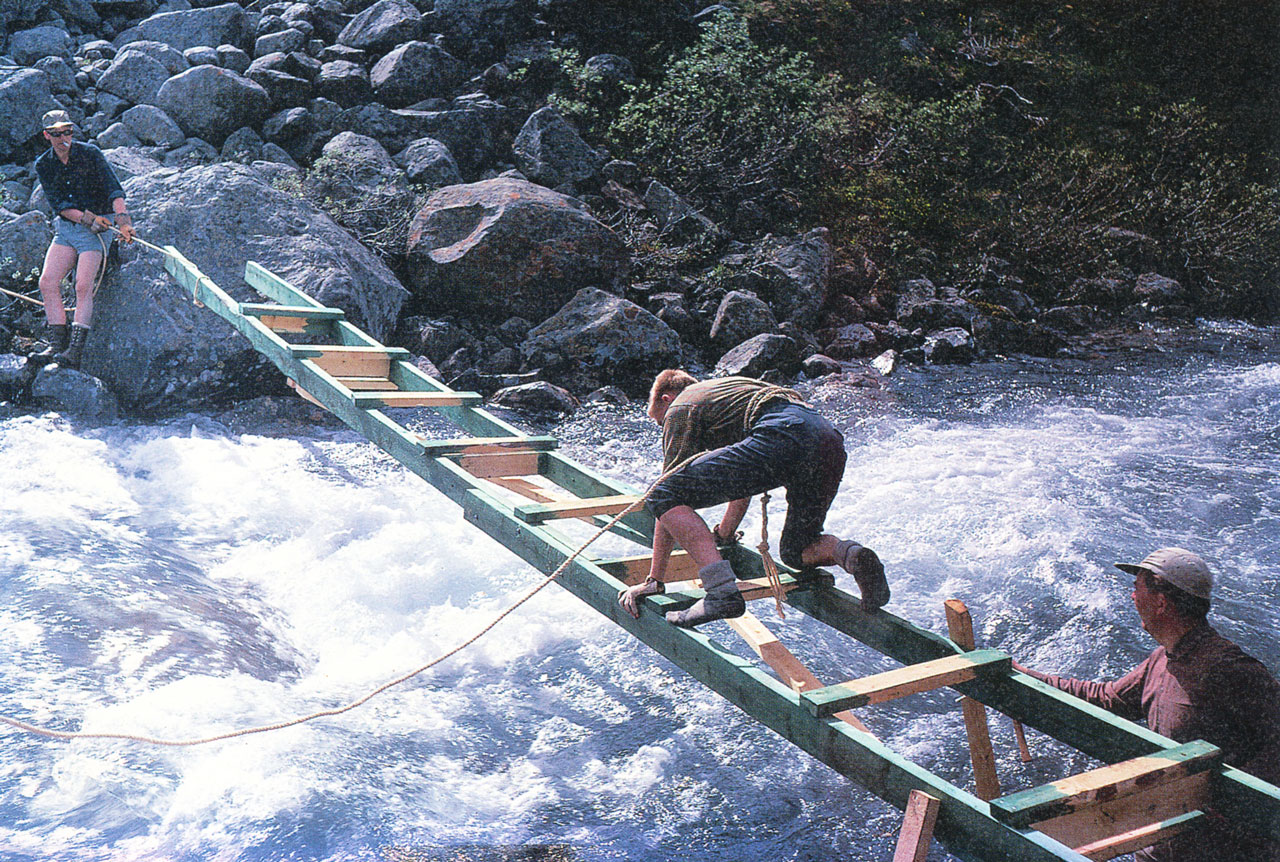IAEA and the Tellus article
In the early 1960s, the head of the Biophysical Laboratory, Jørgen Koch, arranges for his brother and Professor Willi Dansgaard to meet. The brother is Hans Henrik Koch, who in 1961 became the chairman for the Atomic Energy Commission, which has close ties to the UN group, International Atomic Energy Agency or the IAEA. This proves to be significant for Dansgaard.

Samples from all over the world
The purpose of the IAEA is to control the safety of nuclear power plants, to help developing countries with nuclear energy and to keep an eye on pollution by radioactive substances around the world. A global network of stations to collect monthly samples of precipitation and air was established for this purpose.
Hans Henrik Koch quickly realises what a treasure trove of information this must be for Willi Dansgaard’s research and puts him in contact with the Englishman Bryan Payne, who is the head of the Section of Isotope Hydrology. The two begin to meet regularly and arrange for Dansgaard to have access to monthly samples from more than 100 stations around the world. ”Shame on those who couldn't get good science from such a treat,” writes Dansgaard.

The contract also means that a good deal of money is injected into Dansgaard’s research as the IAEA helps fund a new mass spectrometer and the associated labour. The group begins to take shape.
The Tellus article
The collaboration with the IAEA network results in an extensive article entitled ”Stable isotopes in precipitation”, which is published in the journal Tellus in 1964. ”It described a simplified theory for the circulation of the heavy isotopes in the natural water cycle and for the first time a composite parameter (deuterium excess) was used as an indicator for disequilibrium during a phase shift (fore example, evaporation or condensation,” explains Dansgaard.
The article will prove to be groundbreaking in geophysics and geology and Willi Dansgaard himself refers to it as “by far the best work I have done on my own.” The collaboration with IAEA doesn't ends until 1973 and he is pleased to discover that several American universities still use the article to teach geophysics all the way up to 1980.
Expeditions with obstacles
During the 1960s, Dansgaard undertakes several expeditions starting from the problems remaining from the Bubble Expedition in 1958. They are still interested in a method for dating an iceberg and Dansgaard therefore begins to work on finding a new dating method based on the content of the radioactive silicon isotope, Si-32.

The experiments are promising and in 1962 they are awarded money for a new expedition to Store Breen in Norway, where they will attempt to date the ice mass using the Si-32 method. The expedition is a partial success, but the measurements are disturbed by the radioactive material that is raining down over the Norwegian mountains from the Soviet nuclear tests.
”Along with the IAEA project, addressing these problems were our main tasks in the mid-1960s,” explains Dansgaard.
In 1967, the group begins a new expedition under the name the Tycho Brahe Expedition, where the plan is to go a step further and try to date the Greenland icebergs.
The experiments show that Pete Scholander’s carbon-14 results are not correct, but a number of the samples have never been properly measured as the group soon had more important things to do.

”The reason that these samples and really the entire problem of the age of the icebergs suddenly lost importance when something new and promising appeared and took up all of our resources,” explains Willi Dansgaard.
